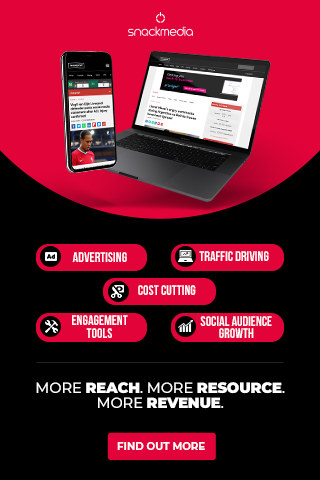Leading sportswear brands make a crucial distinction that makes everyone a potential customer
Maybe it’s just me, but watching Nike’s latest ad campaign ‘Time is Precious’ made me think about a new target audience for sports brands on social media.
It created a buzz even outside the world of sport, and my mind began to contrast it with a Nike ad in the 1990s – their first ad featuring Tiger Woods.
That ad showed lots of children – from all backgrounds – saying the words ‘I’m Tiger Woods’ over and over. Its power lay in the fact that any child from any background can excel. Sport is one of the great levellers of humanity, it doesn’t care how rich or poor you are – only how dedicated you are and how much you’re willing to work for it.
Tiger Woods himself was still pretty much a kid at that point, a phenomenon, and arguably the most gifted golfer ever: certainly of his generation. So it made sense to use him as an inspiration rather than a selling point in himself – the age gap between Woods and an eight year-old watching the ad would still have been smaller than the gap between a 22 year-old Woods and the winner of the Open that year (1998), Mark O’Meara, who was 39 at the time.
Nike weren’t necessarily aiming at golf fans with the ad, either. Sure, those who were interested in golf were going to love it, but any parent wanting their son or daughter to grow up to enjoy sport was going to like it, too. It probably inspired lots of kids to take up sport, too. (An added inspiration to any young British golf fan that year was Justin Rose, who finished as leading amateur, only two shots back and one behind Woods).
It’s nothing new to say that there’s power in a good ad campaign. But the reason to bring this up is because this ad happened long before the internet became an everyday tool and a common part of our lives, let alone the advent of the social media age. And as such, it contrasts quite sharply with the ‘Time is Precious’ campaign.
Even though that ad’s appeal was beyond just golf fans, it still had to be geared towards anyone interested in sport. Or possibly – in a slightly more sinister, money-grabbing twist – their parents. That’s a huge target audience, but it’s still a niche of some kind.
Today the internet takes us all into corners of the world we could not have hoped to reach 20 years ago, and the new ad shows us that. This ad isn’t geared towards golf fans or sports fans. It’s about running, but it’s not even geared towards those interested running or fans of athletics. It doesn’t target runners. It doesn’t even target sports fans or fitness junkies, or even anyone who’s ever thought about being a fitness junkie.
It targets everyone.
The thought that occurs is this, though: it’s not necessarily the internet that means Nike can maneuver their campaigns toward pretty much everyone in the world. The ad rings true for most people of a younger generation, but even people who don’t use the internet and social media to the same life-wasting degree it rings true. Everyone has waste and procrastination in their lives. No one is perfectly efficient.
It’s more that society has changed, too. I’m not sure we now view ‘fitness’ and ‘sport’ in the same category, whereas that may well have been the case before. Going for a run or going to the gym aren’t really seen as ‘doing sport’. That’s just health and fitness.
And as a side note, other big sports brand campaigns take a similar line. Take another look at Under Armour’s I Will What I Want campaign, featuring model Gisele Bundchen literally bashing the hell out of gender stereotypes: the point here isn’t about sport or doing sport. It’s about being fit. And that’s gender, age, ability, and ethnicity neutral.
For brands, sport and fitness is an important distinction. Getting people interested in sport is a wonderful favour to society, but getting them interested in health, fitness and general well being is arguably more important. Exercise is something everyone should be doing to some degree out of necessity. The fact you choose to exercise by practising a sport will remain a choice.
I’m certainly not saying people in general should see ‘sport’ as one thing and ‘fitness’ as another. They can certainly be one and the same thing. But in targeting non-sporting ideas like laziness, procrastination and gender stereotyping – as opposed to sporting excellence and the equality that can bring, like in the Tiger Woods ad – Nike and others can reach a much wider audience given social media’s power.
In fact, they can probably reach just about everyone.
About author
You might also like
SPORTEL 2021: Day One Recap
This year’s prestigious SPORTEL convention kicked off in sunny Monaco today, welcoming a host of familiar faces as well as plenty of new ones. Doors opened at 8:30am with businesses
Six Founding Riders Set To Bring The Vision Of The UCI Track Champions League To Life
Olympic Champions, UCI World Champions and World Record holders join the new track cycling competition debuting in November 2021 The UCI Track Champions League is delighted to announce that six
Sports related spending to soar this summer as pre-pandemic life resumes
New insights from eBay Ads UK reveal the potential for brands to engage with an excited but nervous nation as sports events get back on track As pubs and indoor








